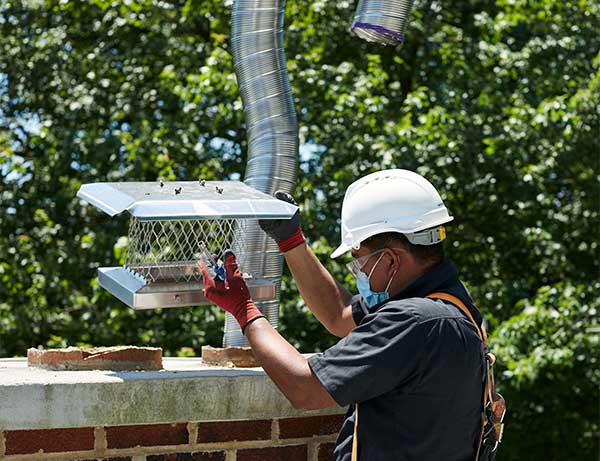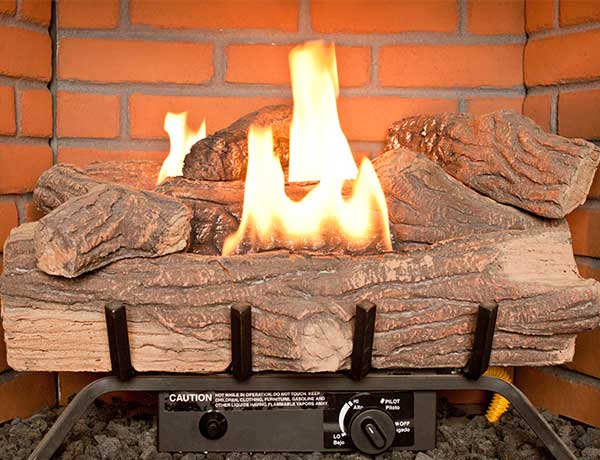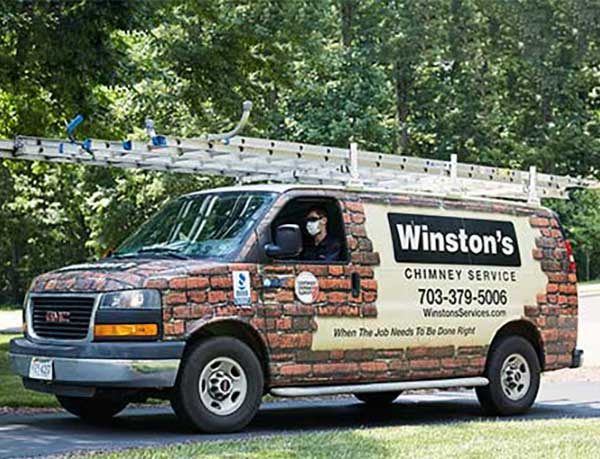Poorly maintained chimneys can be a very real problem. Without realizing it, a chimney that has been left uncleaned and unchecked for too long can fall victim to dangerous chimney fires.
What Causes Chimney Fires?
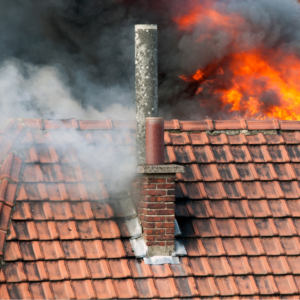 A chimney fire happens when creosote buildup ignites inside the flue of the chimney. This buildup can burn slowly and very hot. The fire can last for long periods of time, damaging your chimney, its components, and threatening other parts of the home, as well. If nothing is done to prevent them, future fires become more likely and burn hotter and longer.
A chimney fire happens when creosote buildup ignites inside the flue of the chimney. This buildup can burn slowly and very hot. The fire can last for long periods of time, damaging your chimney, its components, and threatening other parts of the home, as well. If nothing is done to prevent them, future fires become more likely and burn hotter and longer.
Chimney fires are dangerous and not uncommon. There will be upwards of 20,000 chimney fires in America this year alone. While most of them aren’t noticed until an inspection is made, some will cause severe damage to the home and will remain a looming danger to the families that reside in them.
One of the best ways to prevent these dangerous fires from occurring is to know the signs that one is occurring and has already occurred – and then take steps to prevent them in the future.
Listen to Your Fire
It is often reported that there will be an intense amount of crackling, and even hissing, when a chimney fire is going strong. Sometimes this can be as loud as a passing train, but most often it is subtle. If you are using your fireplace and have a fire currently burning, you may not even hear it at all.
Listen closely – if you hear excessive cracking or popping a chimney fire may be taking place.
Know Your Fireplace
Pay attention to how your fires normally burn. You should know what kind of smells, sounds, and smoke will be produced by your fire. If you experience an uncommon amount of smoke, especially a dense smoke, you may be experiencing a chimney fire.
It is often reported that an intense burning smell occurs during a chimney fire, as well. The smell of properly seasoned wood is one of the joys of owning a fireplace, but if you experience an intense burning smell that goes beyond the smell of your normal fire, you may be experiencing a chimney fire.
What To Do During a Chimney Fire
If you notice that you have a chimney fire, don’t panic. Leave your house immediately and call the fire department. Make sure you and your family are outside and safe, and leave the rest to the trained responders. It is often likely that the fire will remain contained and the damage will be relegated to the chimney and its components. However, there is still a risk of further damage and spreading fire.
Do not try to fight it yourself. Call your emergency number and get the fire department there as soon as possible.
Has a Chimney Fire Already Occurred?
Sometime chimney fires occur quietly – completely unbeknownst to the homeowner. Because of this, it is always good to routinely examine your fireplace and chimney. When you do this, you will notice anomalies that could save you from high-cost repairs and further damage to your home. Some of these anomalies can tip you off to a previous chimney fire.
Should you see any of these signs, take action immediately by calling your local experts, Winston’s Chimney Service.
✓ Cracked Masonry
The main cause of chimney fires is creosote buildup. Creosote is the residue leftover from burning. As the smoke and fumes from your fire rise through your chimney a residue will form over time along the walls of your chimney flue. This is creosote and it is highly combustible.
When creosote ignites, the fire burns slowly and at an extremely high temperature. While masonry is built to withstand high temperatures, direct contact with fire over time will cause your terracotta tiles, bricks, and mortar to fracture and crack. If left undetected, these cracks can absorb more creosote leading to a higher risk of further fires or lead to deterioration and crumbling of the chimney structure.
✓ Cracked, Broken, or Distorted Chimney Cap
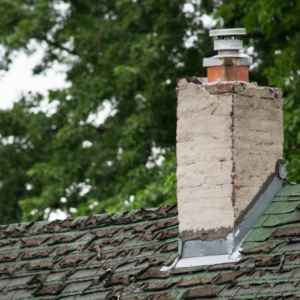 The chimney cap on top of your chimney flue is there to protect your chimney from the elements. While it is often made of metal and not likely to actually light on fire, it can still show signs of a fire damage. If you notice that your chimney cap is distorted and bent abnormally, it might be a sign of exposure to extreme heat.
The chimney cap on top of your chimney flue is there to protect your chimney from the elements. While it is often made of metal and not likely to actually light on fire, it can still show signs of a fire damage. If you notice that your chimney cap is distorted and bent abnormally, it might be a sign of exposure to extreme heat.
Another sign that your chimney cap has experienced the high heat of a chimney fire is discoloration. Metal, when heated, will show different colors such as purples, blues, and greens outlining dark brown and black marks. If you see these colors, it could mean that you have had a chimney fire.
✓ Roof Damage
When you inspect your chimney look for damage to accessories on your roof. Many houses have vents, tv accessories, and other things near the chimney on the roof. If they are melted, discolored, or distorted it could mean that the heat of a fire has been near them.
Look also for damage directly to the roof. If you see weaknesses, melted roofing, or creosote buildup on the roof itsel, it is a likely indicator that a chimney fire has occurred.
We’re Here to Help
Winston’s Chimney Service is dedicated to the well being of our community. Our team of expertly trained technicians can help you spot signs of a chimney fire and provide you services that will prevent future fires. We are certified with the Chimney Safety Institute of America (CSIA) and happy to extend our expertise to the safety of our customers.
Call 703-379-5006 or book online with us today.
